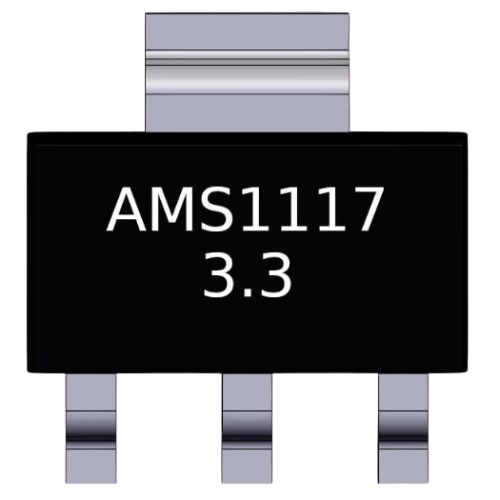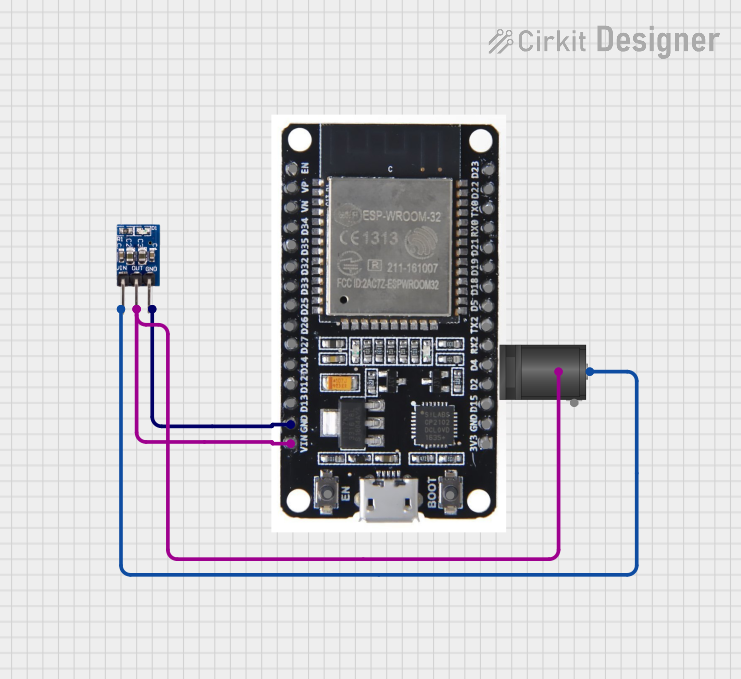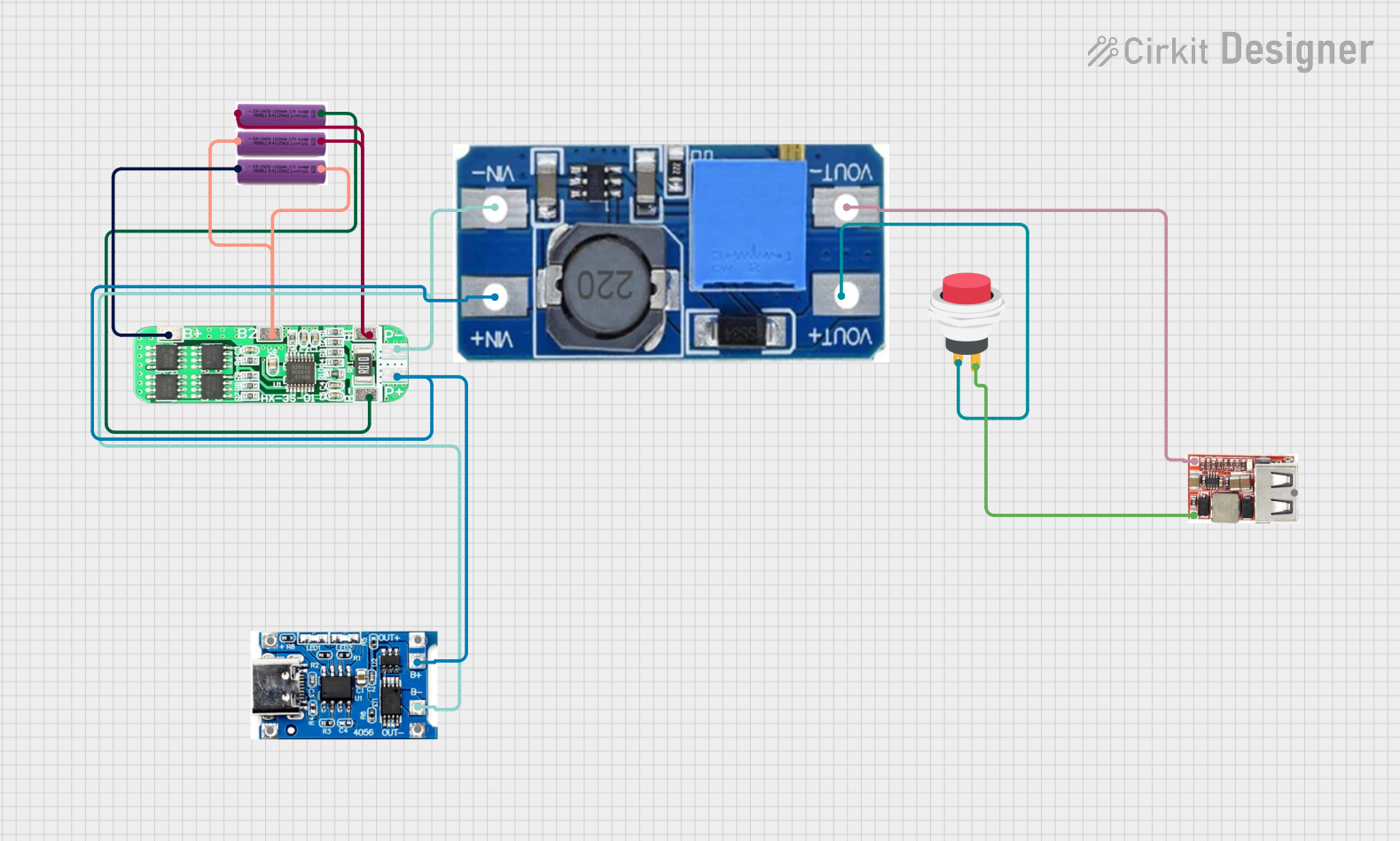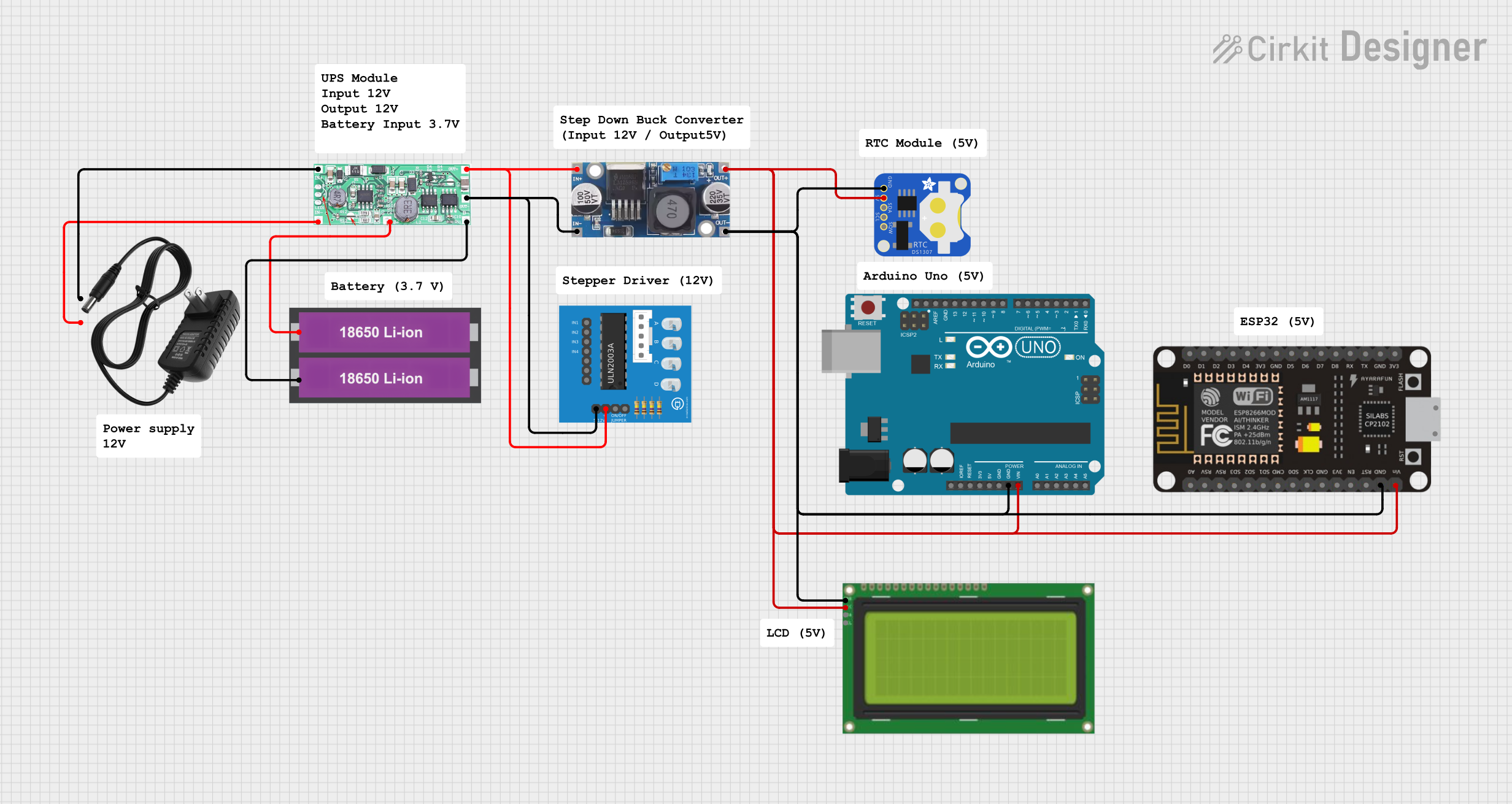
How to Use ams1117 3.3v: Examples, Pinouts, and Specs

 Design with ams1117 3.3v in Cirkit Designer
Design with ams1117 3.3v in Cirkit DesignerIntroduction
The AMS1117 3.3V is a low dropout (LDO) voltage regulator designed to provide a stable 3.3V output from a higher input voltage, typically ranging from 4.5V to 12V. It is widely used in power supply circuits for microcontrollers, sensors, and other electronic devices that require a reliable 3.3V power source. The AMS1117 3.3V features overcurrent protection and thermal shutdown, ensuring safe operation under various conditions.
Explore Projects Built with ams1117 3.3v

 Open Project in Cirkit Designer
Open Project in Cirkit Designer
 Open Project in Cirkit Designer
Open Project in Cirkit Designer
 Open Project in Cirkit Designer
Open Project in Cirkit Designer
 Open Project in Cirkit Designer
Open Project in Cirkit DesignerExplore Projects Built with ams1117 3.3v

 Open Project in Cirkit Designer
Open Project in Cirkit Designer
 Open Project in Cirkit Designer
Open Project in Cirkit Designer
 Open Project in Cirkit Designer
Open Project in Cirkit Designer
 Open Project in Cirkit Designer
Open Project in Cirkit DesignerCommon Applications
- Powering microcontrollers (e.g., Arduino, ESP8266, ESP32)
- Voltage regulation for sensors and modules
- Battery-powered devices
- General-purpose 3.3V power supply circuits
Technical Specifications
The AMS1117 3.3V is a versatile and efficient voltage regulator with the following key specifications:
| Parameter | Value |
|---|---|
| Output Voltage | 3.3V |
| Input Voltage Range | 4.5V to 12V |
| Dropout Voltage | 1.1V (typical at 1A load) |
| Maximum Output Current | 1A |
| Quiescent Current | 5mA (typical) |
| Operating Temperature | -40°C to +125°C |
| Protection Features | Overcurrent protection, thermal shutdown |
Pin Configuration and Descriptions
The AMS1117 3.3V is typically available in a 3-pin SOT-223 package. The pinout is as follows:
| Pin Number | Pin Name | Description |
|---|---|---|
| 1 | GND | Ground pin (connect to circuit ground) |
| 2 | VOUT | Regulated 3.3V output voltage |
| 3 | VIN | Input voltage (4.5V to 12V) |
Usage Instructions
How to Use the AMS1117 3.3V in a Circuit
- Input Voltage: Connect a DC voltage source (4.5V to 12V) to the
VINpin. Ensure the input voltage is at least 1.1V higher than the desired 3.3V output to maintain proper regulation. - Output Voltage: Connect the
VOUTpin to the load that requires a 3.3V power supply. - Ground Connection: Connect the
GNDpin to the circuit ground. - Capacitors: Add decoupling capacitors to stabilize the voltage:
- Place a 10µF capacitor between
VINandGND. - Place a 10µF capacitor between
VOUTandGND.
- Place a 10µF capacitor between
Important Considerations
- Heat Dissipation: The AMS1117 3.3V can generate heat under high current loads. Use a heatsink or ensure proper ventilation if the load exceeds 500mA.
- Input Voltage Range: Do not exceed the maximum input voltage of 12V to avoid damaging the regulator.
- Load Current: Ensure the load current does not exceed 1A to prevent overcurrent protection from activating.
Example: Using AMS1117 3.3V with Arduino UNO
The AMS1117 3.3V can be used to power an Arduino-compatible module or sensor that requires 3.3V. Below is an example of connecting the AMS1117 to an Arduino UNO:
Circuit Connections
- Connect the
VINpin of the AMS1117 to the 5V output of the Arduino UNO. - Connect the
VOUTpin to the 3.3V input of the sensor/module. - Connect the
GNDpin to the Arduino's ground.
Example Code
Here is a simple Arduino sketch to read data from a 3.3V sensor powered by the AMS1117:
// Example: Reading data from a 3.3V sensor powered by AMS1117 3.3V
const int sensorPin = A0; // Connect the sensor output to analog pin A0
void setup() {
Serial.begin(9600); // Initialize serial communication at 9600 baud
pinMode(sensorPin, INPUT); // Set the sensor pin as input
}
void loop() {
int sensorValue = analogRead(sensorPin); // Read the sensor value
float voltage = sensorValue * (3.3 / 1023.0); // Convert to voltage (3.3V reference)
// Print the sensor value and voltage to the Serial Monitor
Serial.print("Sensor Value: ");
Serial.print(sensorValue);
Serial.print(" | Voltage: ");
Serial.print(voltage);
Serial.println(" V");
delay(1000); // Wait for 1 second before the next reading
}
Troubleshooting and FAQs
Common Issues
No Output Voltage
- Cause: Insufficient input voltage.
- Solution: Ensure the input voltage is at least 4.5V and 1.1V higher than the output voltage.
Overheating
- Cause: High current load or insufficient heat dissipation.
- Solution: Reduce the load current or add a heatsink to the AMS1117.
Unstable Output Voltage
- Cause: Missing or insufficient decoupling capacitors.
- Solution: Add 10µF capacitors to both the input and output pins.
Output Voltage Too Low
- Cause: Excessive voltage drop due to high current.
- Solution: Ensure the load current does not exceed 1A.
FAQs
Q1: Can I use the AMS1117 3.3V with a 12V input?
A1: Yes, the AMS1117 can handle up to 12V input. However, ensure proper heat dissipation as the regulator may generate significant heat at higher input voltages.
Q2: What is the minimum input voltage for the AMS1117 3.3V?
A2: The minimum input voltage is 4.5V, but it must be at least 1.1V higher than the output voltage (3.3V) for proper regulation.
Q3: Can the AMS1117 3.3V power a Wi-Fi module like the ESP8266?
A3: Yes, but ensure the input voltage is sufficient and the current demand of the ESP8266 (up to 300mA during transmission) does not exceed the AMS1117's capacity.